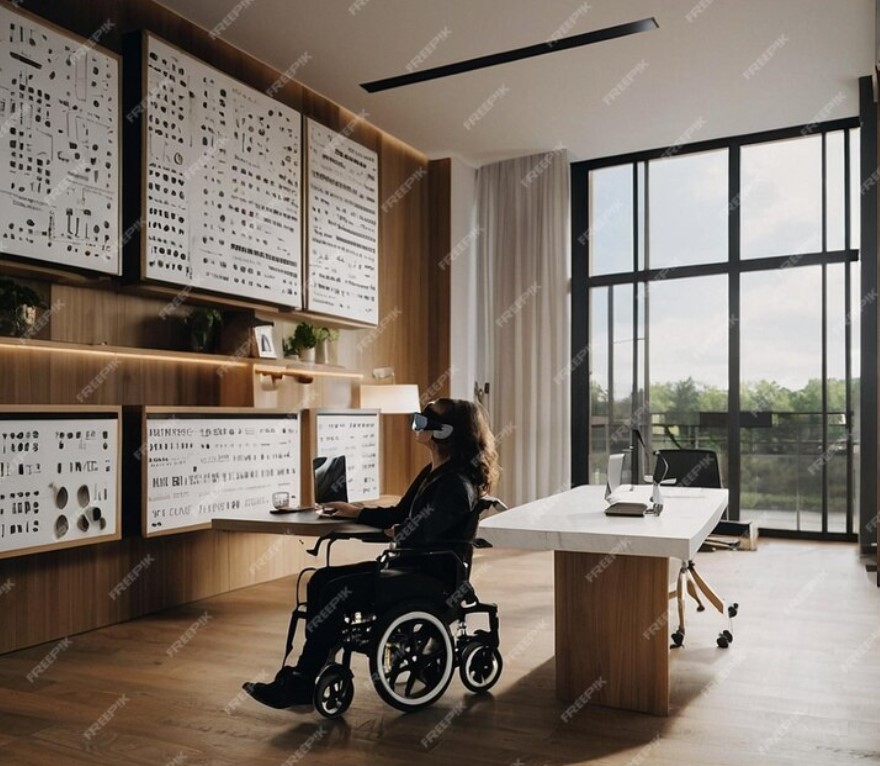Spatial accessibility is such a big problem for individuals with a disability, and they are usually frustrated in spaces that are not accessible to them. An important example is public restrooms, where basic amenities such as changing baby tables are generally unavailable. Although bathroom changing tables are usually connected with baby care, they are necessary and enhance comfort and privacy for disabled people. In this blog, we’ll explore how a bathroom changing table in restrooms helps improve the number of accessible spaces for disabled people.
The Importance of Accessibility in Public Spaces
Public spaces are designed for all people, but where facilities for assistive technology are lacking, such areas are virtually inaccessible to many people. Disabled persons are usually socially excluded because they can stumble upon various problems that do not allow them to be active members of society – it can be either physical inaccessibility, lack of suitable infrastructure or lack of proper care.
Accessibility is not confined to laying down ramps for wheelchairs or lifts to a building’s several floors; it means designing spaces that can be easily tackled without any humiliation for people with physical limitations. Public restrooms are one of the tangible components of this scenario, and still, they rarely find their place in the accessibility planning.
The Role of Bathroom Changing Tables
Adult-sized bathroom changing tables are essential for accessible restrooms. They offer a safe and comfortable space for individuals with disabilities who need help with personal care tasks, like changing incontinence products or managing hygiene. Without these tables, people with disabilities might have to use unsanitary bathroom floors or other unsafe places, which not only undermines their dignity but also poses serious health and safety risks.
Enhancing Dignity and Independence
Awareness of self-determination for any person with a disability is paramount, and that includes personal dignity. Inadequate and poorly designed separated facilities for change of undergarments in public restrooms result in embarrassing and awkward situations. Adult-sized bathroom changing tables can be useful if there is a need to perform end-of-life care or bowel movements discreetly, and this prevents the individual from having to go to the bathroom to do it for themselves or with the help of a carer for dignity and to help improve their self-esteem.
These tables can also include features like adjustable heights, sturdy construction, and enough space for wheelchairs or mobility aids, ensuring they are functional, comfortable, and user-friendly for individuals and their caregivers. Similar to how a Shower Trolley provides a secure and comfortable platform for bathing, a well-designed changing table ensures that personal care tasks can be carried out with dignity and ease.
Addressing Health and Safety Concerns
The health and safety of people with disabilities are critical, and bathroom changing tables are essential in protecting these aspects. Changing on a public restroom floor is undignified and poses serious health risks due to unsanitary conditions that can expose individuals to harmful bacteria. Additionally, the physical strain of lifting someone from a wheelchair to the floor and back can cause injuries to the individual and their caregiver.
A well-designed changing table addresses these concerns by providing a stable, clean, accessible surface. These tables are typically built to support various body weights and can be adjusted to a height that reduces physical strain on caregivers. By minimising risky movements, changing tables helps prevent accidents and create a safer environment for everyone.
Promoting Inclusivity in Society
Including bathroom changing tables in public restrooms is important for fostering inclusivity. These facilities show that the needs of people with disabilities are acknowledged and respected, helping to create spaces where everyone, regardless of physical ability, can participate without unnecessary obstacles.
Additionally, having these facilities in public areas raises awareness about the importance of accessibility. It encourages businesses, governments, and communities to prioritise inclusive design in public spaces, ensuring everyone can live independently and with dignity.
Facilitating Caregiver Support
Bathroom changing tables benefit not just people with disabilities but also their caregivers. Many caregivers assist with personal care tasks, and without proper facilities, this can be physically and emotionally challenging. Changing tables designed for adults provide a safe, ergonomic space for caregivers, reducing the risk of injury from lifting or awkward movements.
These tables also help create a more respectful and supportive environment, allowing caregivers to work with dignity and ease. By improving the caregiving experience and strengthening support for people with disabilities, these facilities make public spaces more accommodating for everyone involved.
Conclusion
They ensure that people with disabilities get a better means of handling their personal needs with dignity. These tables are useful in ensuring that public spaces are safe for everyone, including independence, making it easier for people to access everything. Regarding striving for the creation of a society that belongs to everyone or, in other words, striving for accessibility, bathroom changing tables in public restrooms is one of the steps that must be made to have people with disabilities fully integrated into the communities.
Investing in changing the bathroom tables is not just about meeting legal requirements or adhering to ethical standards; it’s about recognising the inherent dignity of every individual and ensuring that public spaces are welcoming and accessible to all. Incorporating tools like bathroom changing tables significantly enhances accessibility for people with disabilities, promoting independence, dignity, and safety. Paired with solutions like CHS Healthcare hygiene slings, which ensure optimal support and hygiene during transfers, these innovations collectively transform daily care routines for both individuals and caregivers.

